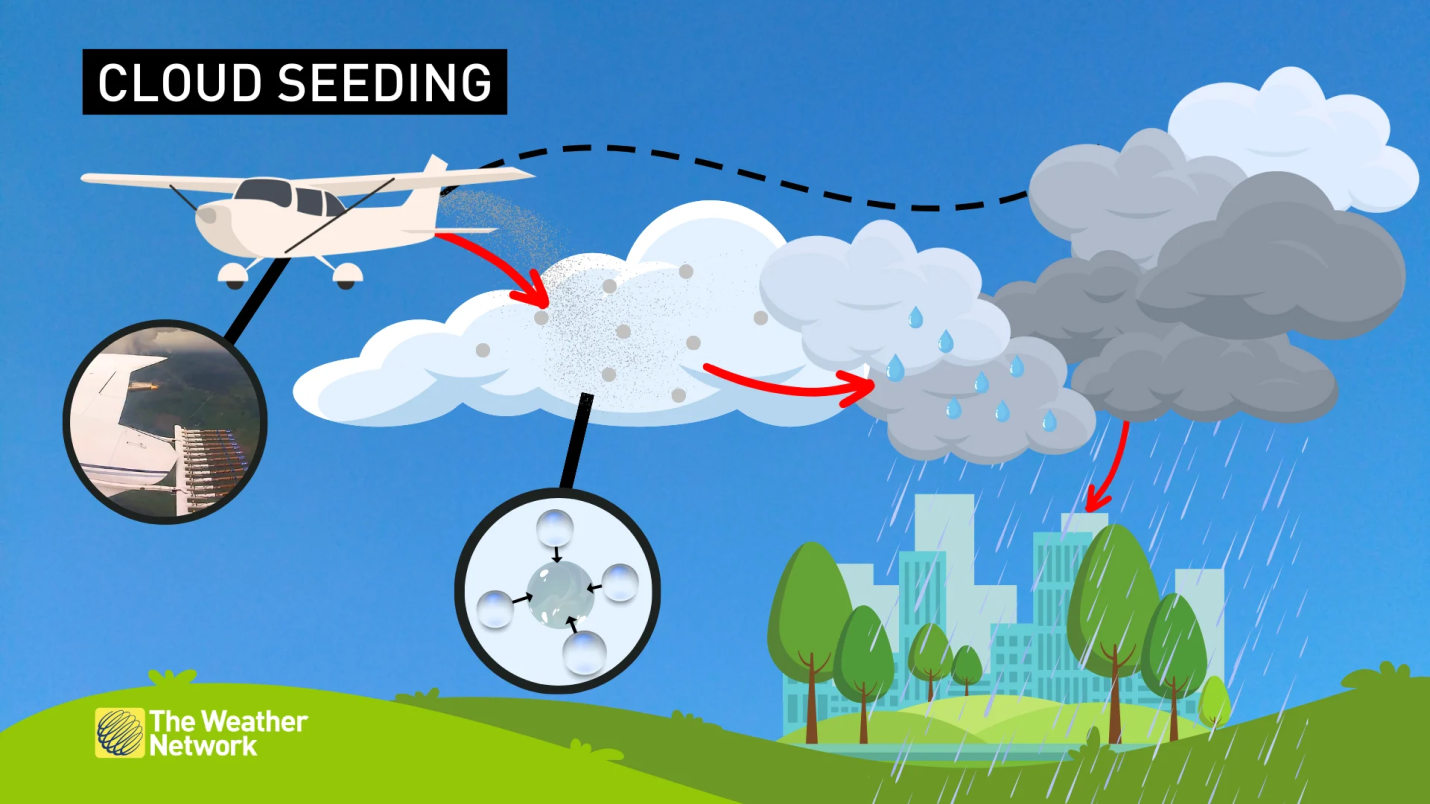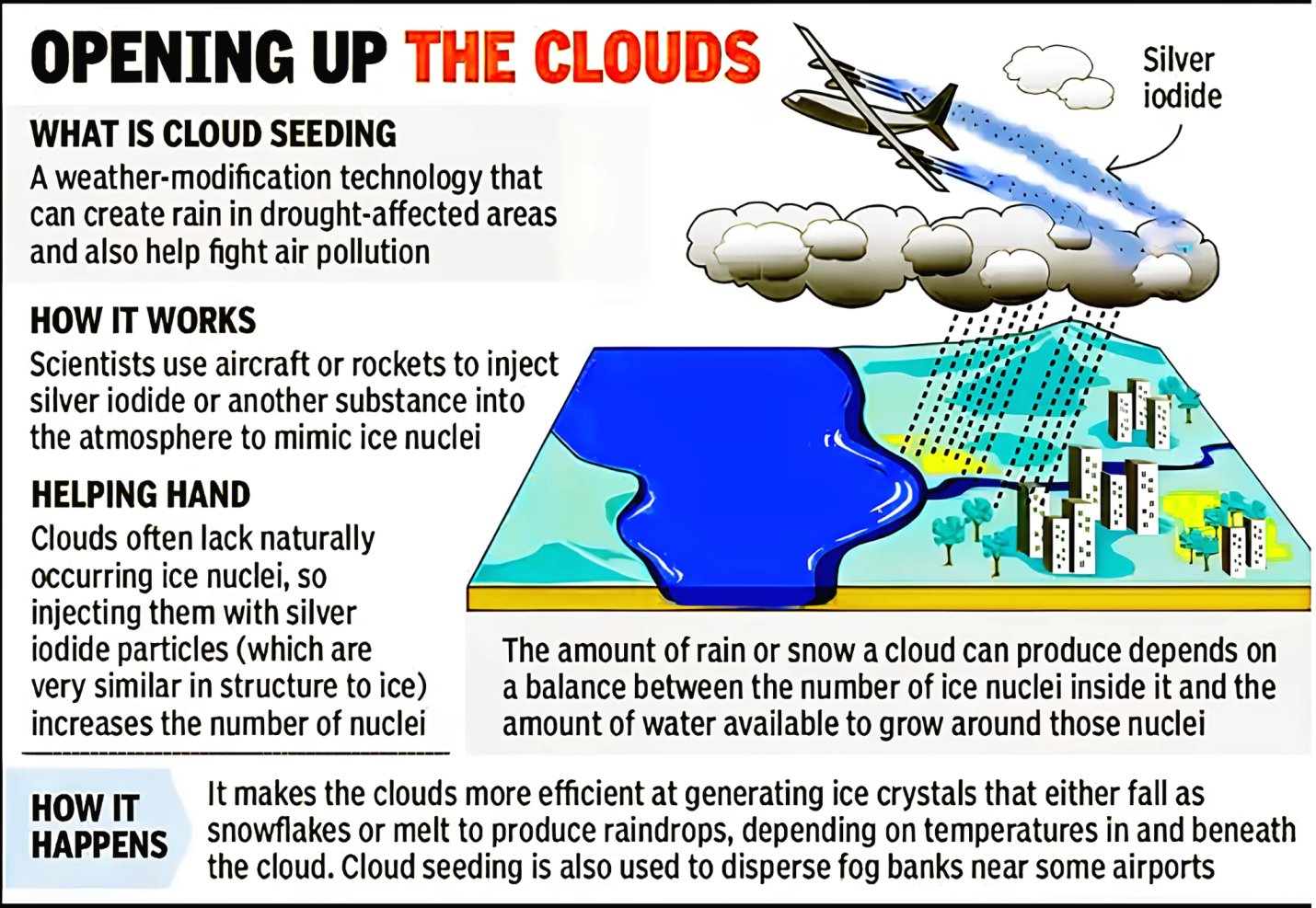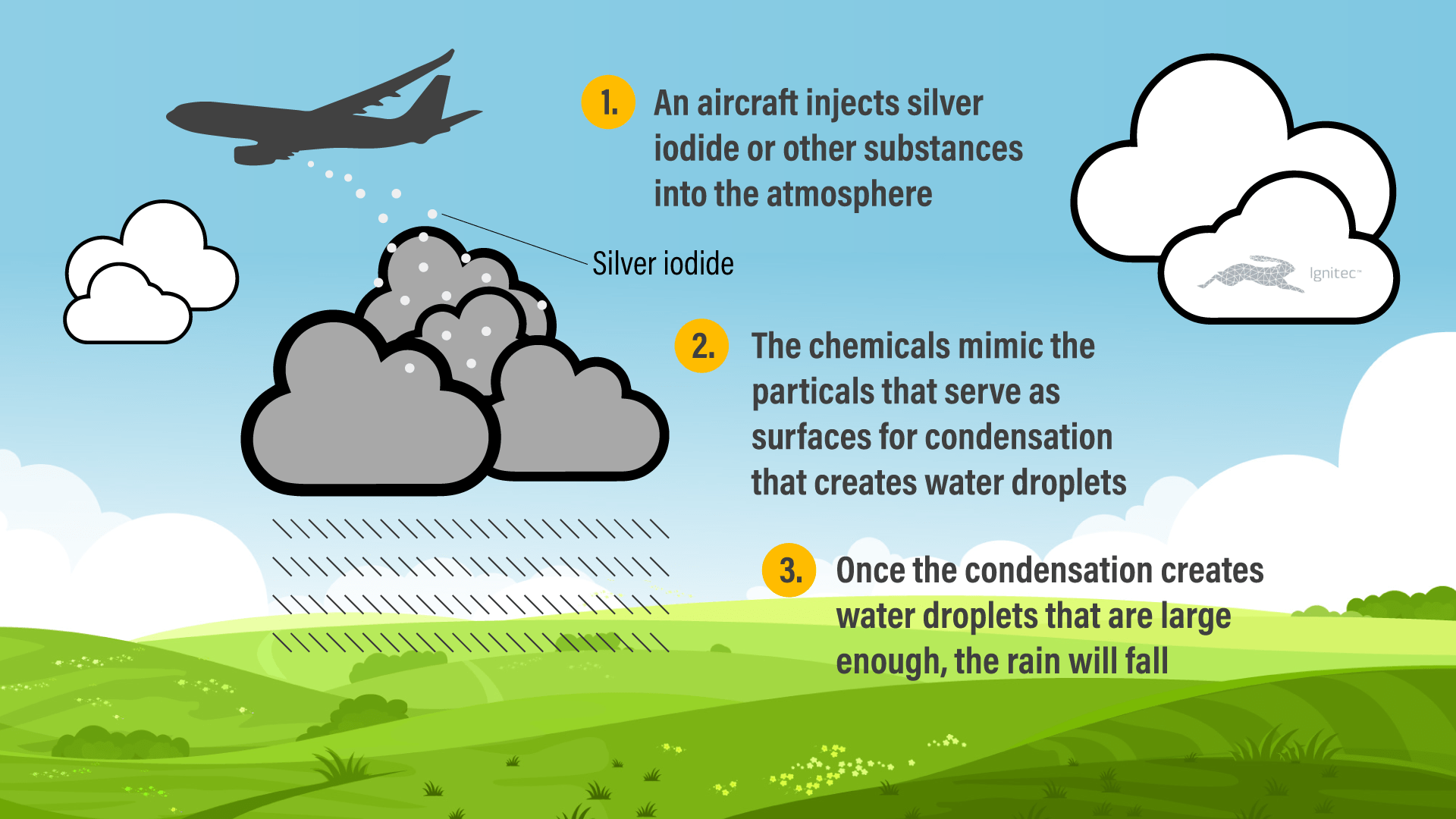Free Courses Sale ends Soon, Get It Now


Free Courses Sale ends Soon, Get It Now



Copyright infringement not intended
Picture Courtesy: https://www.theweathernetwork.com/en/news/science/explainers/what-is-cloud-seeding-weather-modification-to-create-rain-snow
Context: The recent forest fires in Uttarakhand drew attention from the Supreme Court, which highlighted the significance of preventive measures rather than relying on rain gods or cloud-seeding to extinguish the fires.
Cloud Seeding

Purpose of Cloud Seeding
Seeding Agents
Cloud seeding involves the deployment of specific substances into clouds, which act as nuclei for condensation or ice crystal formation. Commonly used seeding agents include:
Methods of Cloud Seeding
Process of Cloud Seeding

Effectiveness and Challenges
The effectiveness of cloud seeding can vary based on several factors, including cloud type, atmospheric conditions, and the choice of seeding agents. Some key considerations and challenges include:
Conclusion
Must Read Articles:
Source:
|
PRACTICE QUESTION Q. Cloud seeding aims to increase precipitation by introducing: 1. Hygroscopic materials that attract water vapour. 2. Ice nuclei that trigger ice crystal formation in supercooled clouds. 3. Coagulants that merge small water droplets into larger ones. 4. Heat sources that increase convection and cloud development. How many of the above statements are correct? A) Only one B) Only two C) Only three D) All four Answer: C |
© 2024 iasgyan. All right reserved